From the PCPA Volunteer Newsletter, August, 2009:
Delta Park/Vanport station remembers the historic town of Vanport that flooding destroyed in 1948. Valerie Otani said Vanport was the 2nd largest city in Oregon at the time and contained distinct ethnic communities (including many displaced Japanese displaced from internment camps after WWII). When the levy broke it allowed a 20 foot wall of water to completely destroy the town. The hand railings were casts of various
“found” objects: bottles, coins, trinkets and other objects. Below the station are metal sculptures set in the ground reminiscent of the roofs of the houses that were literally floating in the flood water. Interestingly, Ms. Otani said they had difficulty including the name “Vanport” in the station title. TriMet usually requires the station be named for an existing place--and there is no Vanport in existence now. But they wanted people to remember it and know where it existed. Delta Park is now a raceway located on the abandoned Vanport streets.
About the handrail, facts from TriMet: A bronze railing features cast artifacts from the Chinookan culture, Vanport and the Portland International Raceway.
Sections of the handrail:
See Daisy Duck?

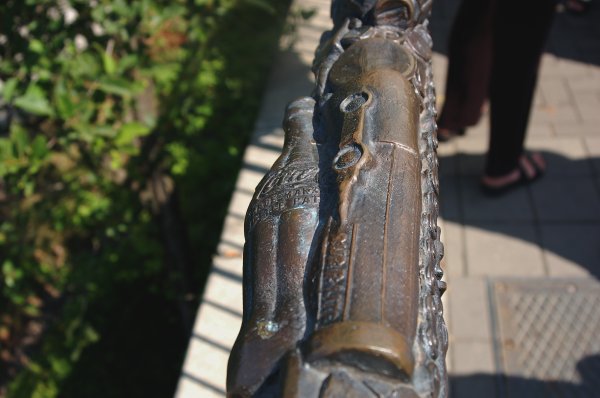
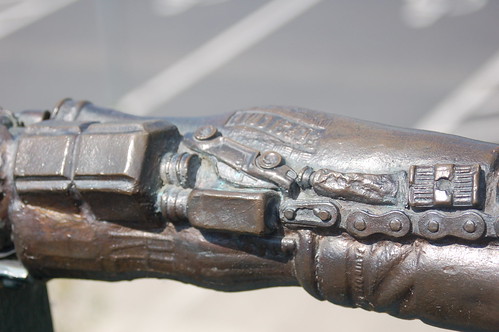
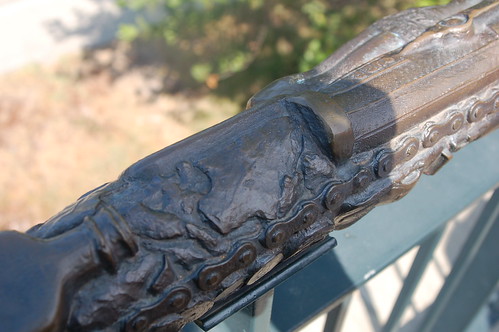
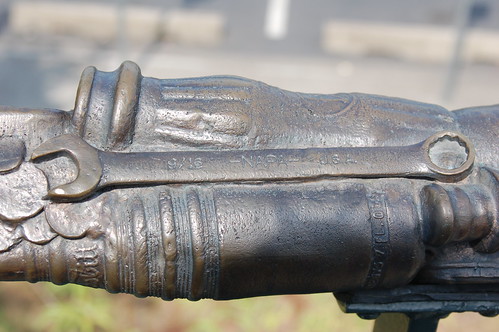
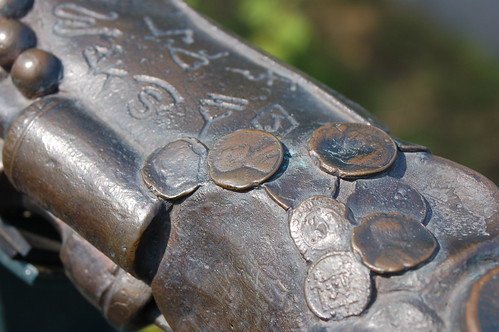
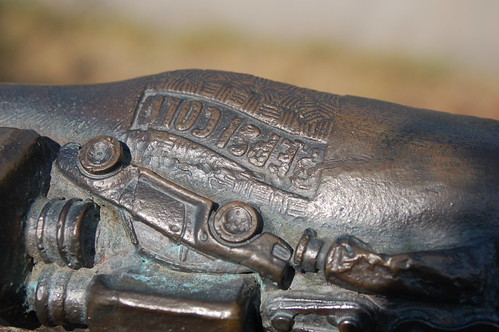
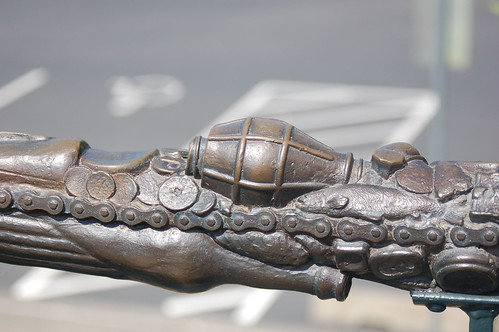
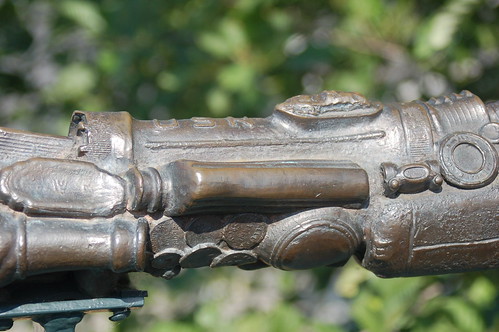
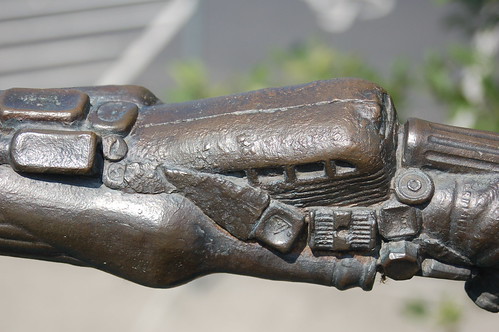
Here's the story of the artifacts that inspired the handrail for artist Linda Wysong:
From "Eugene Register-Guard," March 5, 2002:
The city of Vanport was wiped out by the flooding Columbia River 54 years ago. But pieces of it keep surfacing--in the form of household belongings once owned by residents.
Armed with a screwdriver and a shovel, Terri Johnson probes the mud on the flood plain north of Portland where Vanport once stood. Rainfall brings personal objects to the survace.
Artifacts she has found over the years include fingernail polish, marbles, dentures, a rifle bullet, a sealed jar of jam, a shot glass, perfume, a toy Greyhound bus, tea cups and a prescription container that says "Economy Drug, Vanport."
On a recent day, Johnson jabbed a screwdriver into the soil. There was a "Clink." She pulls out a milky shard, probably from a cold cream jar.
"I go by the sound," she said.
Vanport vanished at 4:17 p.m. on May 30, 1948, when a makeshift dike tumbled apart. A wall of water from the swollen Columbia River plowed into buildings, homes and cars.
Records say about 15 people died. Survivors have said they believe that scores of others vanished. More than 18,000 residents became homeless.
Johnson, 58, has spare time to prod for artifacts since she moved to the former Vanport acreage 14 years ago with her husband, Fred Johnson, 60, a retired city of Portland sewer and forestry worker.
The Johnsons serve as caretakers for Portland International Raceway, which stands where part of Vanport used to be.
The former Vanport acreage--a flood plain known today as West Delta Park--now cradles the Heron Lakes Golf Course, the Portland Metropolitan Exposition Center and the raceway wetlands where Terri Johnson roams.
On a recent day, Johnson strolled the bus-length concrete slab.
The slab once served as the foundation for Vanport's movie theater which, on the afternoon the city ended, had been alive with popcorn and candy and children and a double-bill of films that included the "Wreck of the Hesperus."
"I would like to see a plaque here," Johnson said. "'In memory of Vanport survivors and those who have passed, and who were lost in the floods.'"
Among the survivors is Ed Washington, 65, until recently a Metro councilor.
Washington was a youngster when the ceiling-high wave washed away his family's home. Until the dike gave way, Washington recalls, many residents had figured that the season's rising waters might simply dampen floors. He says he imagined you'd just walk back in and sweep it out.
"There was no sweeping out," he says. "Our lives were swept away."
The dahlia today, the Tahiti Sunrise, from Swan Island Dahlias, Canby, Oregon

No comments:
Post a Comment